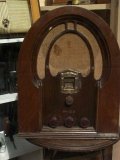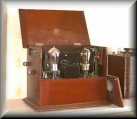Getting PRESENCE into the scene
As a director, you have to convey to your listeners that all the characters in a scene are 'there'.
How do you keep a character 'in' when that character is listening to others, and not speaking at the time?
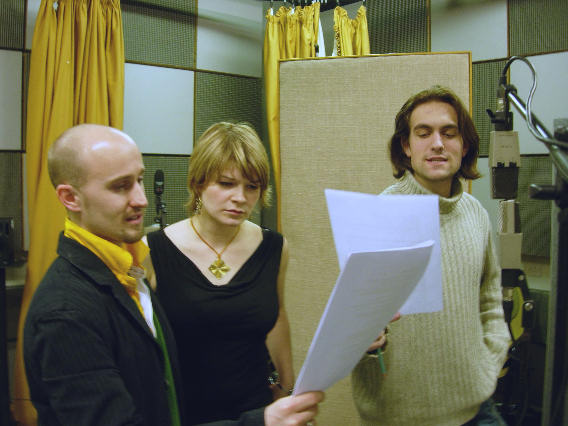
| By quality of acting - professional radio actors convey that being 'in' by their skills. |
| Good radio acting is NOT stop-start, NOT acting only when speaking the words. |
| Good radio acting is all the dialogue in between. |
| IN PRODUCTION, YOU USE: sound effects (1) the actor's presence (shifting bodily and the character's clothes), inbreaths and outbreaths, (2) the 'umms' (1) characters' reactions while others (scene partners) are speaking, (2) establishing presence and (3) redrafting the script so that one character is not left SILENT AND SO ABSENT for too long. |
| IN POST-PRODUCTION, you add further markers of 'presence' from pre-recorded sound effects - see TEACHER - INTRODUCTION - LESSON PLANS |
Radio drama dialogue is much more than the words on the page.
Avoid the impression of 'stand-and-deliver' acting & dialogue
| As a radio drama director, you have to create the 'live-ness' of character dialogue. |
| DO NOT keep your actors in the same position in front of the microphones all through a dialogue scene. |
| REDRAFT THE SCRIPT if you need. Do not be afraid to do this! You must give opportunities to your actors to come alive. |
|
|
| This is a SHIFT from one position to another. It demands technical acting skill. It must fit with the dialogue situation - the intimate climax of a scene?, telling a secret?, wanting to move to an objective. |
| Get your actors to 'embody' the dialogue - to introduce physicality into the dialogue. This has to be organic - it has to realise what is in the script and it has to 'breathe', and open out the dialogue. |
| Don't be too fussy. All must serve the character-action-script. |
| ENTRANCES AND EXITS - I am overall against a scene beginning with an entrance and ending with an exit. (It's too slow.) But a character can arrive into the dialogue of two others (what I call the TWO PLUS ONE technique). |
| CHANGE a fixed-sound centre scene into a moving sound centre scene. (See SOUND CENTRE - FIXED SOUND CENTRE - the centre of the sound picture remains fixed in the same place + MOVING SOUND CENTRE - 'we go with') |
![]()
|
|
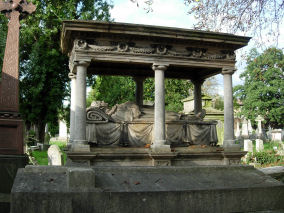
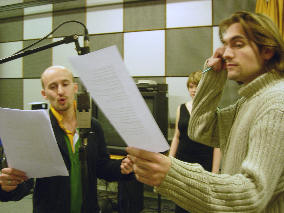 PRODUCTION:
Once or twice or more during the dialogue, direct your actors
to move from POSITION THREE (dialogue) to POSITION TWO (intimate
dialogue).
PRODUCTION:
Once or twice or more during the dialogue, direct your actors
to move from POSITION THREE (dialogue) to POSITION TWO (intimate
dialogue).
